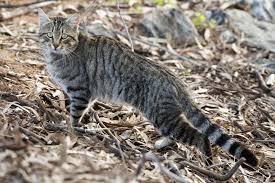
ANIMAL PEST CONTROL
The Tutukaka Landcare Coalition (TLC) was established in 2003 with the aim of protecting and enhancing the residual population of North Island Brown Kiwi found in the coastal forest stretching from Ngunguru to Sandy Bay. We have done this by installing and maintaining a series of trap lines to reduce or eliminate their key predators—stoats and feral cats—and by educating the community about responsible pet ownership.
Check the pests below to find out about the damage they do and how best to trap them.
STOAT
Our number one enemy. Originally introduced in the 1880's to control rabbits and hares.
They evolved in the cooler parts of the Northern hemisphere and developed the habit of killing then stashing their prey for a later snack!
With a pulse rate of approx. 400 beats per minute, they will kill up to 5 times a day.
Males are larger than females. Territories range from 60, to 300ha.
Excellent climbers and swimmers they thrive in NZ from the Northern beaches to the snowy alpine peaks.
Their numbers peak from November to February when the young disperse from their dens.
Generally widespread and low densities. Ferocious killers.
Distinctive feature: black tip to the tail.
RAT
Evolved in central Asia and hitchhiked round the planet with humans.
The damage they inflict on our biodiversity is immense.
Victims include: nesting birds, chicks, eggs insects, and lizards. to say nothing about the impact they can have on our homes.
Traps and poison are very effective, particularly during the main bird breeding period of September to January.
WEASEL
Similar to stoats but smaller, and likely not quite so lethal.
Thrives on lizards and insects, like weta, and capable of taking birds eggs and chicks. Like stoats, excellent swimmers and climbers, so very damaging to small nesting birds.
FERRET
The largest of the Mustelid family, grows to the size of a small cat, and been known to kill adult kiwi.
Introduced in the 1880's to control rabbits, then 100 years later for fitch farms particularly in northland. When the fir market collapsed many were released to the wild with devastating impacts on the Northland kiwi population.
There have been recent catches at Glenbervie and near Kaiatea Rd.
FERAL CAT
The largest of the Mustelid family, grows to the size of a small cat, and been known to kill adult kiwi.
Introduced in the 1880's to control rabbits, then 100 years later for fitch farms particularly in northland. When the fir market collapsed many were released to the wild with devastating impacts on the Northland kiwi population.
There have been recent catches at Glenbervie and near Kaiatea Rd.
POSSUM
arrived in New Zealand with the idea of developing a fir industry. Without intervention they would have totally destroyed our native forests. These critters don’t stop with the vegetation. They happily snacks on chicks ans eggs too.
HOW YOU CAN HELP
-

INSTALL TRAPS
Learn how to trap these pests by participating to a trapping workshop. turn a hobby into something more.
-
REPORT THEM
Let TLC know if you see recurrent pest animals.
-

PARTICIPATE TO TRAPPING WORKSHOPS
Learn about all the different methods to control these pests and apply them to your property.






